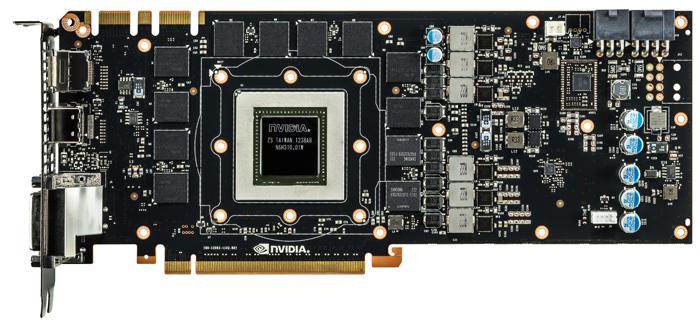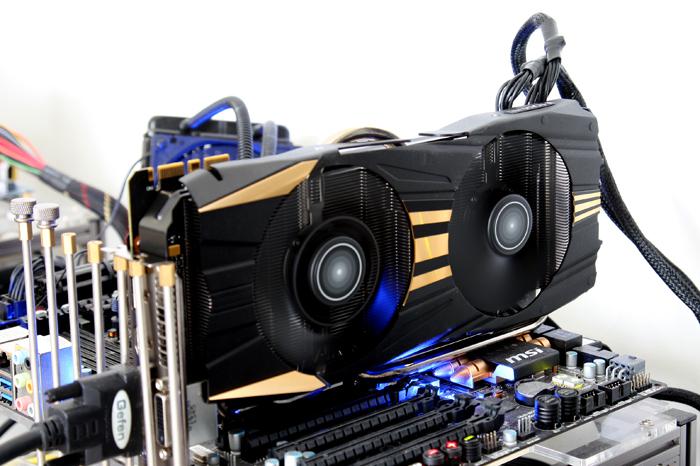Product Showcase
Product Showcase
If we look at the PCB (this is the reference card BTW) we can see two SLI connectors, four cards in quad-SLI GPU mode are supported. Quad SLI however is difficult and often a maze of driver problems.
Nvidia has never really recommended or actively supported quad-SLI. But for a handful of benchmarks and sheer e-peen, it will work OK'ish. We really recommend going with a maximum of 2, maybe three cards.
ASUS tucked 3 GB of graphics memory on this card, 3GB we feel is a sweet spot for high-end single monitor gaming anno 2014, but with Ultra HD gaming in mind, I feel that 4 GB is more tasty. ASUS delivers a backplate with the card, so the backside is nicely protected. Good to see are ventilation holes over the VRM and GPU area. The back of the PCB comes with specialized SAP CAPs which increase the overclocking headroom while the custom concrete alloy chokes help reduce the buzzing noise produced on reference variants. You'll spot that the card was designed for ASUS ROG features as well, with voltage read points at the back which are visible through the backplate.
For this GeForce GTX 780 Ti article we'll look at performance based on high-end yet more moderate processors and then on the X79 platform with an overclocked Core i7 3960X running at 4600 MHz. Above the two 8-pin PEG headers I mentioned on the previous page. The PCB itself custom and is based on ASUS’s Super Alloy Power technology and comes with a multi-Phase DIGI+ VRM power delivery which gives the core enough power to overclock and run with maximum stability. The GPU gets 6 power dedicated phases BTW.
I really need to find me one of these CSI rulers for sheer coolness factor :) . The card is 10.7 inches in length which is 28 cm.
That's it for this photo-shoot though. We need to tell you a tale or two about the GPU and the architecture of course.







